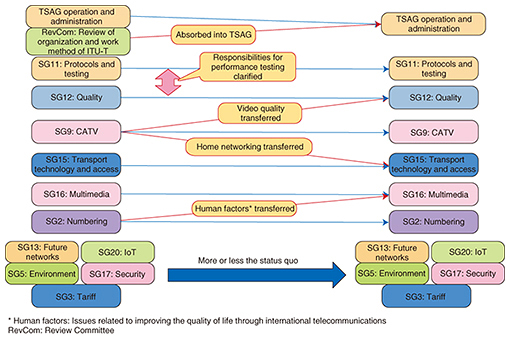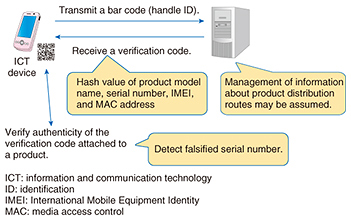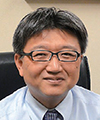 |
|
|
|
|
|
Global Standardization Activities Vol. 15, No. 3, pp. 48–54, Mar. 2017. https://doi.org/10.53829/ntr201703gls Report on WTSA-16 (World Telecommunication Standardization Assembly 2016)AbstractThe World Telecommunication Standardization Assembly was held from October 25 to November 3 in 2016 in Yasmine Hammamet, Tunisia. This article gives an overview of the meeting along with information about the main topics that were discussed. Keywords: WTSA, IMT, digital object architecture 1. IntroductionThe World Telecommunication Standardization Assembly (WTSA) is the highest decision-making body of the International Telecommunication Union Telecommunication Standardization Sector (ITU-T), which oversees telecommunication standardization in the ITU. The assembly convenes every four years (Fig. 1). Decision-making organizations above WTSA include the Plenipotentiary Conference and the Council (Fig. 2). WTSA formulates the action policies of ITU-T, organizes Study Groups (SGs), and appoints the chairs and vice-chairs of SGs and the Telecommunication Standardization Advisory Group (TSAG).
The SGs are the key organizations engaged in ITU-T’s standardization activities. Since discussions at this level require a high level of technical expertise, experts from private companies play an important role. In contrast, most topics discussed in WTSA concern policy or organizational operation matters. Consequently, government officials play a larger role, although technical knowledge is required when discussing what topics should be addressed by the SGs. A feature of WTSA is, therefore, that its discussions require collaboration between government and the private sector. The outcomes of the discussions in WTSA usually take the form of resolution documents. Unlike the ITU Constitution, ITU Convention, or ITU Administrative Regulations (Radio Regulations and International Telecommunication Regulations), which are treated as international law, these documents are not legally binding. However, since they define the policies governing ITU-T activities, they are not only of great importance in and of themselves but also serve as guidelines for the working methods adopted by ITU-T. Under its plenary, WTSA forms five committees (Fig. 3), each of which discusses specific topics. Particularly important are COM3, which studies working methods, and COM4, which discusses the work program.
2. SG restructuringThe restructuring of SGs is the most important issue to be addressed by WTSA. ITU-T currently has 11 SGs. To improve the efficiency of ITU-T operations, it was proposed that some SGs with decreasing workloads should be merged with other SGs. Specifically, the merger of SG9 (cable television (CATV)) and SG15/SG16, and the merger of SG11 (protocols and testing) and SG13, were considered. Members from the USA, Canada, and CEPT (European Conference of Postal and Telecommunications Administrations) proposed the merger of SG11 and SG13, but the Regional Commonwealth in the field of Communications (RCC; Russia and other countries in the region) and the Asia-Pacific Telecommunity (APT) proposed to retain SG11 as a separate entity. Support for this merger from Member States was insufficient, so it was agreed to retain SG11 as an independent study group. Initially, no organizations other than APT expressed a desire to keep SG9. However, when Japan argued for the retention of SG9 based on the peculiarities of the standardization of CATV, which is subject to regulations that are different from other regulations applied to the telecommunications industry, Russia changed its stance to support the continuation of SG9. With this as a trigger, nations in the Middle Eastern and African regions also changed their positions to support the retention of SG9. There was an extended discussion between these parties and the USA and the member European nations, which proposed for SG9 to be merged. On October 29, the latter backed off and agreed to the retention of SG9. Although it was decided to retain SG9, the USA and European nations insisted on transferring SG9’s question on quality to SG12 and the question on home networking to SG15. The developing nations that supported the retention of SG9 had no strong opinion on this matter. In particular, while the African nations supported the retention of SG9, they requested the transfer of the question on quality. The chair of COM4, which was in charge of SG restructuring at this WTSA, was a Ghanaian. He tried to push the transfer of the question through, but Japan resisted his attempt by expressing a reservation (an act of retaining the right to restart a specific discussion), claiming that there was a problem in the manner in which the discussion had proceeded. In the end, it was agreed to transfer the questions on quality and home networking, but the responsibilities of the related SGs were rearranged to enable these SGs to take those actions deemed necessary. Other agreements include the transfer of the question on human factors from SG2 to SG16 and the merger of the Review Committee, which had been studying the reorganization of ITU-T, into TSAG. The results of SG restructuring were laid out in Resolution 2. An overview of SG restructuring is shown in Fig. 4.
3. Appointments of chairs and vice-chairsThe chairs and vice-chairs appointed are listed in Table 1. New chairs were appointed for SGs 2, 5, 9, 11, 16, and 17. These appointments took regional balance into consideration, so no more than one chair was appointed from the same nation except for Japan, which has two chairs (SG3 and SG9).
Resolution 35 contains provisions on the appointments of chairs and vice-chairs. This WTSA revised some of the provisions to limit the number of vice-chairs from the same region to three in each SG. In view of the trend of there being too many vice-chairs appointed from developing countries, the intention of this revision was to enhance the quality of vice-chairs by applying some restrictions. At first, some members proposed limiting the number of vice-chairs from the same region to two, but in view of the fact that several Asian nations such as Japan, China, and Korea are more active than others, the number was raised to three. For TSAG, the number of vice-chairs from a single region is limited to two. In recent years, as elsewhere, the increased participation of women in the field of standardization has been noticeable. For example, the chair of SG5 is an Argentinean woman. Some expressed the need to seek a gender balance in the appointments of chairs and vice-chairs. In Japan, it will be necessary to foster the greater participation of women in the area of standardization activities. 4. Promotion of study on IMT and cooperation with open source communitiesInternational Mobile Telecommunications (IMT) is a standardization topic concerning mobile communications. It is a unique technical field where wireless and wired technologies converge. Expectation has been growing recently for the development of a fifth-generation mobile communication network called IMT-2020. IMT is being studied not only by ITU but by a variety of standardization bodies. In order to accelerate the standardization of the non-wireless part of IMT-2020, ITU-T established the Focus Group on IMT-2020 (FG-IMT2020) in May 2015. It has been analyzing existing standards, studying existing technologies such as front/backhaul networks and software implementation of networks, collaborating with open source communities, and promoting prototyping. Since collaboration with ITU-R (ITU Radiocommunication Sector), which is responsible for wireless technology, is important when studying IMT, collaboration with different ITU sectors was defined in Resolution 38. Advances in the activities of FG-IMT2020 have led to the formulation of a new resolution, which clarified the tasks of related SGs in addition to collaboration between ITU sectors in order to accelerate the study on IMT. As a replacement to existing Resolution 38, this resolution strengthens the content of Resolution 38. FG-IMT2020 is studying the possibility of cooperating with open source communities to gain their participation in standardization efforts. The cooperation between standardization groups and open source communities is expected to expand in many areas beyond IMT. With this trend taken into consideration, a new resolution was adopted to strengthen cooperation with open source communities. 5. DOA and countermeasures against counterfeit productsConsiderable time was spent at WTSA-16 discussing how to incorporate issues related to digital object architecture (DOA) and its applications into resolutions. The DOA is a system used to identify the serial number and other details of a product based on a two-dimensional bar code. It can be used to detect imitation (counterfeit) products and manage the distribution channels of products (Fig. 5).
Imitation communication devices such as mobile phones are said to be spreading particularly quickly in developing countries. They represent a variety of problems, including infringement of intellectual property rights and lack of due attention to safety and environmental protection. Some products are actually authentic but have been stolen with their serial numbers overwritten. However, it is necessary to note that other than illicitly modified products, stolen products have been properly certified at point of manufacture, and thus their problems are slightly different from those of imitation products. SG11 is studying what countermeasures can be taken to combat imitation products and is proposing solutions, including one that uses an International Mobile Equipment Identity (IMEI) database. An IMEI is assigned to each mobile terminal. Another solution it proposes is the use of the DOA. The DOA is referred to in a number of resolutions in this WTSA: Resolution 50 (cybersecurity), Resolution 60 (identifications for Internet of Things), Resolution 78 (e-health), a new resolution related to imitation products, and a new resolution related to stolen mobile devices. The discussion centered on whether to accept the DOA in these resolutions. There were two opposing parties. One party, consisting of the USA and European nations, argued that the DOA was just an example of implementation technologies, and that adopting it in resolutions without studying its technical details is tantamount to denying the existence of similar technologies that have been adopted in recommendations. The other party, consisting of Russia and the African nations, stated that the DOA was highly generic and useful technology and insisted on promoting its study by explicitly referring to it in resolutions. This division was partly due to differences between the two parties in the interpretation of Resolution 188 of the Plenipotentiary Conference, which refers to Recommendation ITU-T X.1255, which stated that it was based on the DOA. This matter was assigned to COM4, which discussed it in both formal and informal meetings. Although a draft compromise with some modifications to the description of the DOA was informally proposed, no conclusion was reached. The matter was carried over to the next plenary conference. On the night of November 2, with only two days left for the conference, this matter was included in a new draft resolution on imitation products. When modifications to the description of the DOA recurred, the chair made a hurried attempt to approve the draft resolution. The USA and European nations opposed this attempt and raised a point of order, which was a motion of objection. The dispute over the DOA has several possible causes. First, a top-down approach of adopting a resolution in a plenary meeting was attempted in an effort to deal with a technical issue that should more properly be addressed by technical experts holding detailed discussions in SGs. Second, a Memorandum of Understanding existed between ITU and the DONA (Digital Object Numbering Authority) Foundation, which is promoting the DOA. Third, there was a competition between member groups to obtain leadership in Internet-related technologies. 6. Discussions on the InternetAt the previous WTSA in 2012, there was great interest in international governance of the Internet because the conference was to be followed immediately by the World Congress on International Telecommunications (WCIT), which is in charge of making revisions to the International Telecommunication Regulations (ITR). At WTSA-16, discussions on the Internet were not as intense as before because there was still no schedule for the next WCIT. The African nations proposed a draft resolution promoting a study on levying a tax on over-the-top (OTT) providers. This was because telecommunication carriers in developing countries are seeing their revenues dwindle due to the expansion of OTT, and they want to recover them through taxation. While it is evident that there is competition between OTT providers and telecommunication carriers, some argued that taxation was not an appropriate matter for ITU-T, a body dedicated to technical discussions, because responsibility for taxation lies with the sovereign governments of individual nations. In the end, the new draft resolution was not adopted. The only decision that was made was to request SG2 and SG3 to study management and financial matters related to numbering resources. The Middle Eastern nations and the RCC proposed a resolution relating to ITU-T’s participation in another revision of the ITR. Although the Council was studying revision of the ITR, it had made no decision on specific directions for the revision. Since the ITR has a major impact on ITU-T, some insisted on holding discussions on this matter within ITU-T by adopting a new resolution. In the end, WTSA adopted a resolution to study the ITR through TSAG based on the resolutions of the Plenipotentiary Conference and the Council. In addition to the above, Resolution 52 on countermeasures against spam, Resolution 64 on the transition to IPv6 (Internet Protocol version 6), and Resolution 69 demanding unlimited access to Internet resources, were updated. 7. Future prospectsAt this WTSA, there was a sharp division of opinions, including those on the DOA, between developed and developing countries, leading to intense disputes not seen in recent years. However, with new people appointed to chairmanships and vice-chairmanships in many SGs, ITU-T will undertake its activities over the next four years with updated missions adapted to the current circumstances of the telecommunications industry. We will contribute to the global expansion of NTT technologies. |
|


















